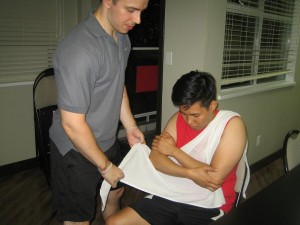Seattle CPR remains one of the highest quality CPR training providers in Washington, offering a variety of affordable programs in basic and advanced CPR. We advise all prospective trainees to enroll in a program early, particularly for the general public class, because slots run out early. We have a large volume of trainees who apply to CPR training each year, with the general public class being the first to fill up with students.
We offer trainees different ways to enroll in a program. The most popular way is through our Seattle CPR website, with the application form. The online form is available all day and can be filled out whenever. Other conventional ways to enroll are also available, such as telephone calls, e-mails, and walk-ins during business hours.
What does CPR do?

When a heart attack happens, the most common result is a cardiac arrest. Cardiac arrest is used to describe a condition where in the heart stops beating – a cardiac rhythm called asystole. Contrary to what movies and TV shows depict, defibrillation is not used during asystole. The only medical management involved in trying to get the heart spontaneously beating again is by chest compressions and medication.
A combination of compressions and ventilation (a ratio of 30:2 composes one cycle) is meant to restore the spontaneous circulation of blood in the body. Defibrillation, on the other hand, is used to shock the heart into asystole in order to return it to a normal rhythm. That said, defibrillation can only be used when the victim is experiencing severe cardiac arrhythmia. Defibrillation is done with an AED or automated external defibrillation.
The effects of a heart attack
The primary danger of a heart that doesn’t beat is a lack of oxygen delivery to the different parts of the body. The organ that is in most danger from this condition is the brain. After 10 minutes without oxygen supply, the brain tissue begins to die and irreversible damage occurs. This can cause problems in voluntary and involuntary functions of the body. With rehabilitation therapy, most victims of stroke and heart attacks can recover completely or at least be able to regain the ability to perform activities of daily living (ADLs).
Training programs available
Basic Life Support training is focused on three core skills mentioned above. It will teach either one or two-person rescue, depending in which program you take.
- Heartsaver CPR – A program for the general public that teaches one-person rescue
- Heartsaver CPR C – A program for health care providers that teaches one-person rescue
- Basic Life Support for Health Care Providers – A program for health care providers that teaches one and two-person rescue as well as the Basic Life Support guidelines from the AHA
Advanced Life Support training is for health care professionals, focusing on the medical management of victims of cardiac arrest. Medical management involves a complex set of skills and techniques that can only be performed by health professionals, such as medication administration.
